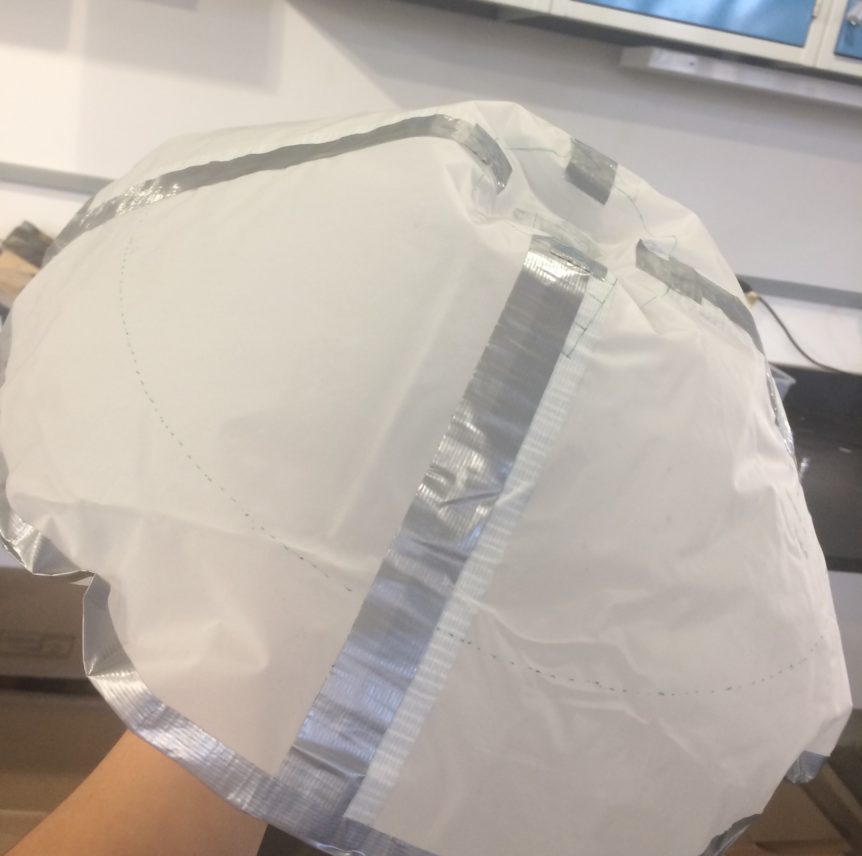As fall turns to winter, our focus has changed from preliminary designs to prototyping. Our CanSat structure consists of an aluminum frame, surrounded by an air cushion which inflates during descent. The cushion serves to protect our payload, as well as open the CanSat’s aerodynamic shield.
Progress has been made on both fronts. Since our CanSat has to slide out of a rocket’s payload section, we increased clearances by resizing the structure. Manufacturing and assembly of this updated design is ongoing.
We’re now on our second air cushion prototype. The first one confirmed our material and seams can hold pressure, but was too small and prone to leaks. The second (pictured) is easier to manufacture, and supported by a 3D printed internal structure. Unfortunately, the inflation port leaks, preventing us from testing its strength over extended periods of time.
Our next step will be the inflation hardware; current prototypes are inflated using a bicycle pump, as their purpose was to confirm the material and adhesives used are sufficient, and to refine the pattern used to construct the cushion.
Our third prototype will have an improved inflation port, allowing us to completely fill the cushion. Additional 3D printed reinforcements prevent it from deforming.
Next, we’ll be assembling revision 3 and confirming it can be inflated with the new printed structure. We’ll then confirm the cushion can open the CanSat’s heat shield.
Finally, while earlier tests sought to determine the maximum pressure supported by the material and adhesive seams, these were unsuccessful – the lid popped off our pressure test setup before that maximum value was reached. A revised test will assist us in determining these limits.

